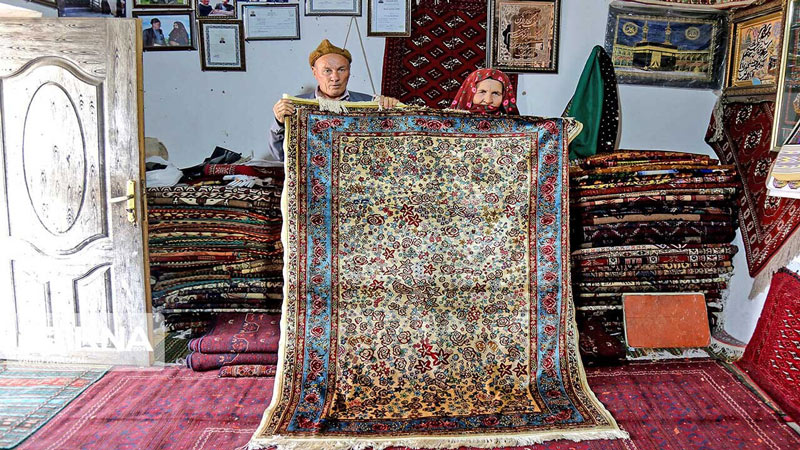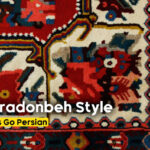
Faradonbeh Carpets, an Attractive and Popular Design
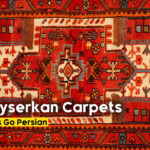
Tuyserkan Carpets
In Iran, there is a great diversity of carpets, and as you travel across the country, you’ll encounter various carpets unique to each region. The presence of different types of carpets in Iran has led to their worldwide fame due to the diversity and beauty they exhibit. Double-sided silk Carpets are among the most valuable Iranian carpets, highly favored by foreign traders.

Double-Sided Silk Carpets
Double-sided silk Carpets, a type of Iranian carpet, are renowned for their distinct and unique features. Woven by the Turkmen people of Iran, these carpets are also known as Turkmen Rugs. With special patterns, techniques, combinations, and unique colors, these carpets are considered valuable artistic pieces, attracting customers from around the world.
The village of Doydookh is recognized as the center for Double-Sided Silk Carpets. For centuries, the people of this village have been weaving these carpets, showcasing their art to the world. Some handwoven carpets from Doydookh have achieved global recognition for their exceptional value. This village is located in the border region of North Khorasan, in the Raz and Jargalan districts.
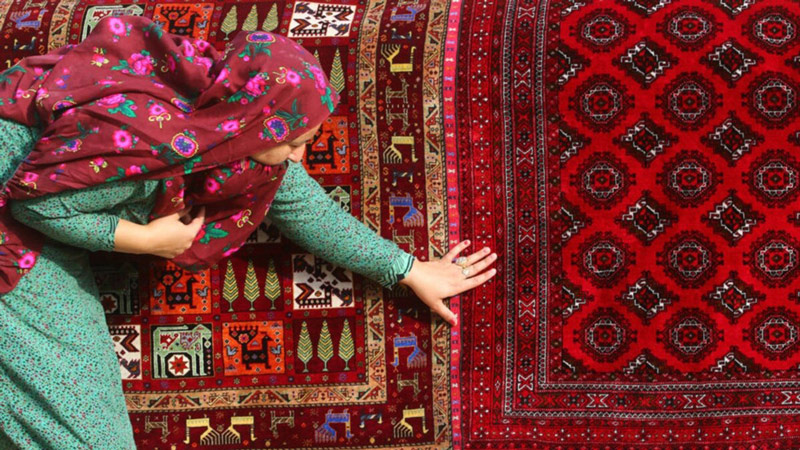
Annual Statistics
The annual statistics related to the weaving of Double-Sided Silk Carpets are quite remarkable. Approximately two thousand square meters of these carpets are woven in the village of Doydookh each year. Notably, none of these carpets stay in the hands of the weavers, as many customers eagerly await their completion. In North Khorasan province, particularly centered around the village of Doydookh, there are about four hundred carpet looms dedicated to weaving Double-Sided Silk Carpets. The majority of these carpets, about 80%, are exported to European countries, Japan, and Persian Gulf neighboring countries, making them a significant export commodity.
Carpet Dimensions
Generally, carpets come in various dimensions, and Double-Sided Silk Carpets woven in the Raz and Jargalan region, specifically in the village of Doydookh, follow different dimensions. However, the standard size for Double-Sided Silk Carpets in this area is typically 2 meters by 1.40 meters.

Silk Production
The silk used for weaving Double-Sided Silk Carpets is natural. Notably, the Turkmen people, engaged in weaving these carpets, undertake the production of natural silk. They start by cultivating silkworms using mulberry leaves. Once the silk cocoons are ready, the process of preparing silk threads begins. Since these raw threads require coloring, the weavers use natural dyes. They then employ their innovative and creative minds to design and weave the carpets.
Pile Shearing of Double-Sided Carpets
The pile shearing of Double-Sided Silk Carpets is performed in two forms: fixed and rotating. These methods have both differences and similarities. In both fixed and rotating pile shearing, the piles are placed in the middle of the carpet. Due to the dual-sided weaving process of Double-Sided Silk Carpets, a finer material may be used for pile shearing, and the knot density may vary from thirty to fifty knots per square inch.
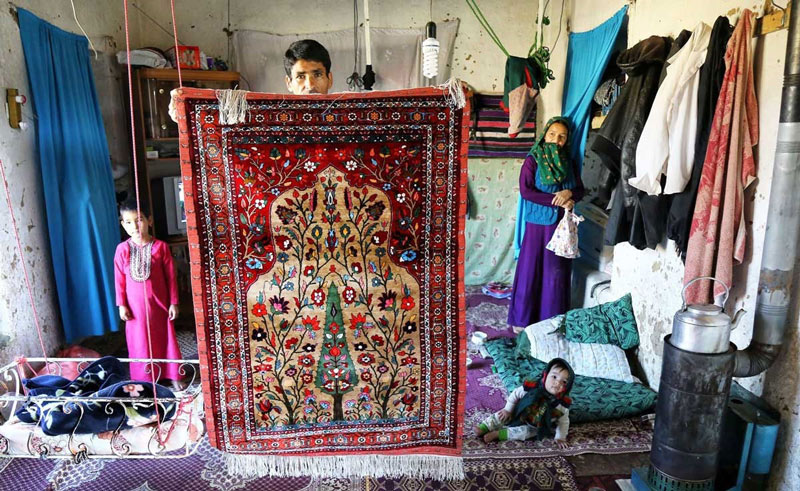
Pile Shearing Process
In the fixed pile shearing process of Double-Sided Silk Carpets, the number of knots is calculated based on the pattern. The central rod is then tied in the middle of the loom. The weavers start with the first knot by passing the pile over the rod from below. The pile is then sent over the top of the rod, twisted, and then comes down to the bottom of the rod. This process continues, back and forth, until the pile shearing is complete.
Difference between Rotating and Fixed Pile Shearing of Double-Sided Carpets
This type of pile shearing differs from rotating pile shearing. In fixed pile shearing, one knot is counted for each pass, while in rotating pile shearing, only one thread is counted for each pass. Typically, fixed pile shearing is used for wider and taller weaves, while rotating pile shearing is employed for weaves with lower heights. After completing the pile shearing, the warp and weft are knotted together, finishing the weaving process.
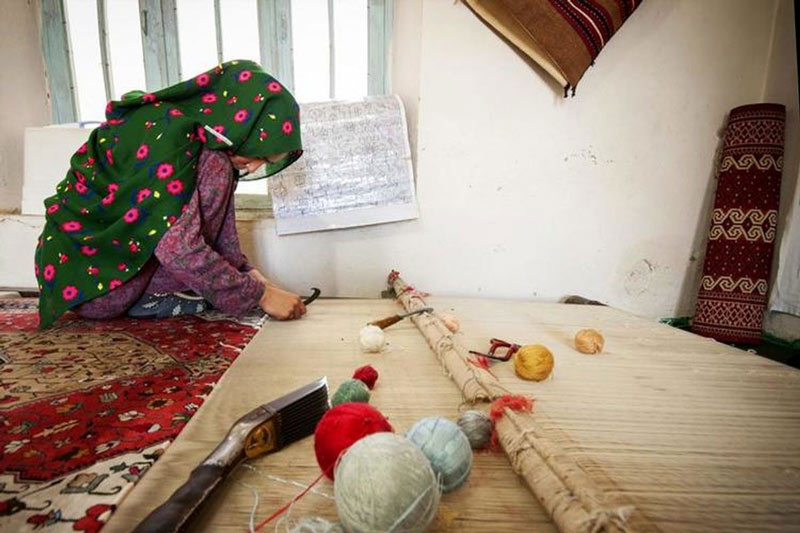
Weaving Technique
The weaving technique of Double-Sided Silk Carpets typically involves the use of two distinct patterns with equal knots along the length and width. In some cases, different color schemes are used in the weaving process. If two different patterns are employed, and their knot sizes are not identical, simpler weaving is done on the smaller-sized pattern.
For instance, if the design on the carpet features a flower on the front and a tree on the back, two carpet weavers can work simultaneously. One weaver creates the front pattern, and the other crafts the back pattern. The weaving process may begin with one weaver making the flower, and simultaneously, the other works on the tree behind it.
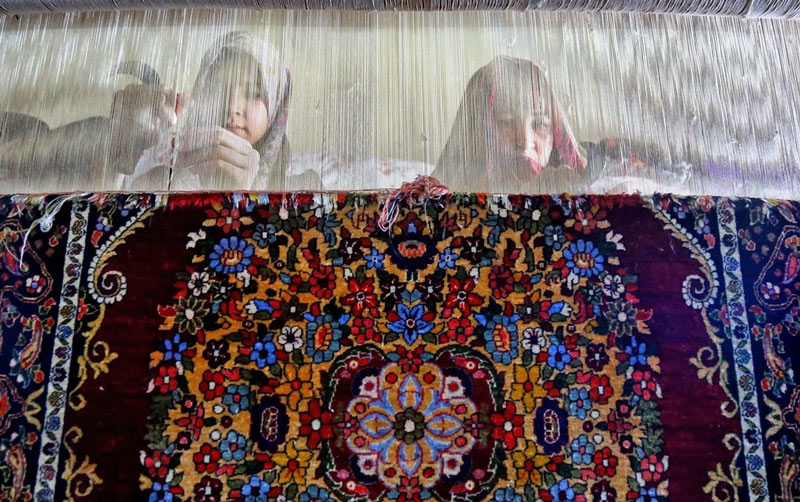
After completing a row of weaving, a thick and thin weft is woven to ensure the carpet’s strength. Following the completion of the front-side weaving, a thin weft is woven, and the weavers start crafting the backside using a thick and thin weft. Looms, essential for this process, provide the foundation. To start the second row, weaving must commence on the side facing the front pattern. Subsequently, the back of the carpet is woven. This process continues until the completion of the work, where the selvage is woven, the warp and weft are tied, and finally, the carpet is removed from the loom.
Double-Sided Silk Carpets: A Tourist Attraction
Apart from being one of the most significant export carpets, Double-Sided Silk Carpets also capture the attention of foreign tourists. Many tourists visiting Iran, especially those exploring North Khorasan province, make it a point to visit the village of Doydookh and other regions known for crafting these carpets. Some tourists even engage in purchasing these exquisite carpets, making them not only a trade commodity but also a cherished souvenir for those exploring the rich cultural tapestry of Iran.
